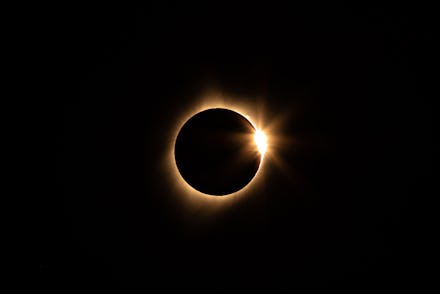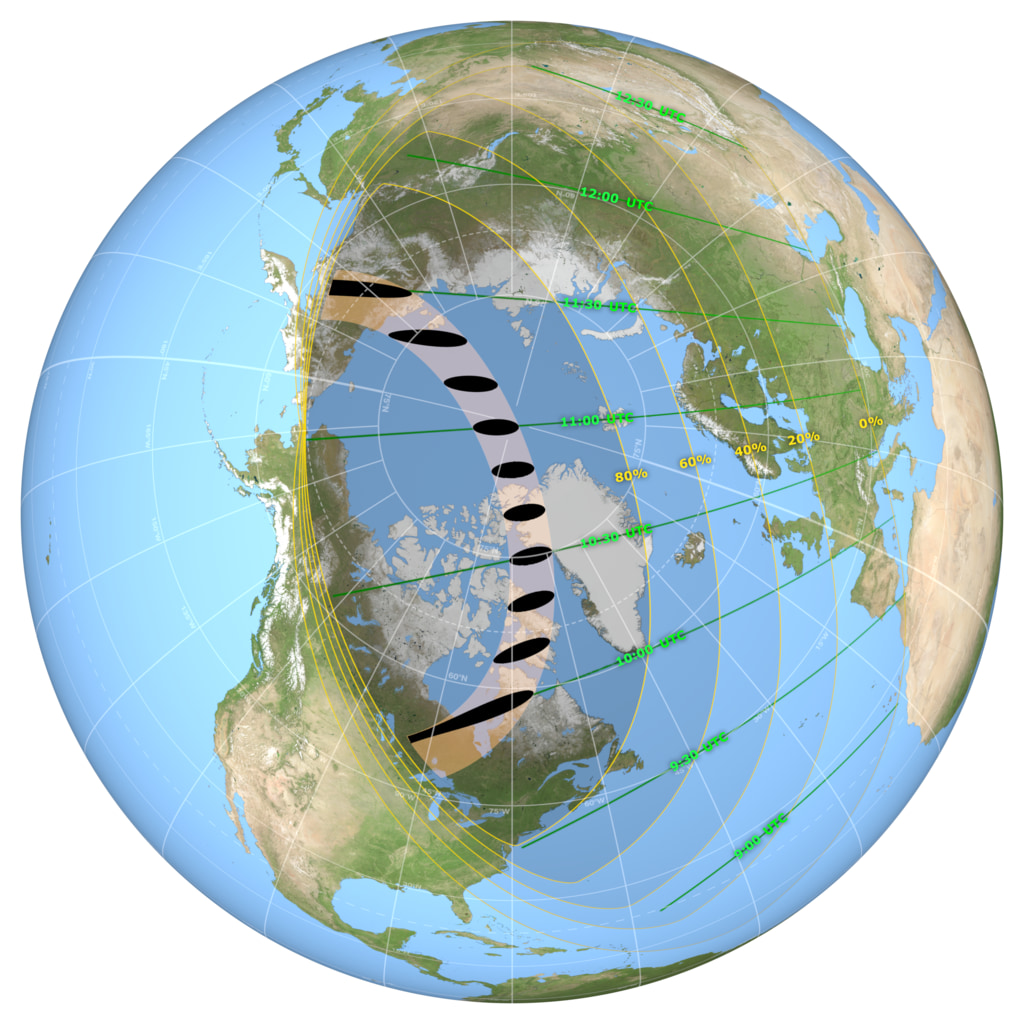There's a solar eclipse tomorrow. Here's what you need to know

On Thursday, a ring of fire will appear in the sky. No, it's not whatever god you choose to believe in bringing us our much deserved comeuppance — the rapture will have to wait. Instead, the fireball in the sky will come courtesy of a partial solar eclipse, which will create the appearance of the moon taking a bite out of the sun.
Solar eclipses, even just partial ones, are uncommon occurrences, happening just a few times each year. But actually getting to see one is much rarer, because visibility depends on where you're located. We've got a complete guide below on how to watch Thursday's event, and why it's worth setting your alarm early to peek up at the sky.
When is the solar eclipse?
The solar eclipse will start at sunrise on Thursday at 4:12 a.m. ET. The eclipse is technically marked for 08:12 UTC (Universal Coordinated Time). What that translates into exactly will depend on where you're located in the world; you can check the exact start time in your area by using a time converter.
How long will the solar eclipse last?
According to EarthSky, the eclipse is expected to last for about 100 minutes, a little over an hour and a half in total. However, the peak will be much shorter. The "ring of fire" stage — that incredible visual of the moon sliding in front of the rising sun — will last just under four minutes.
Who will be able to see the eclipse?
If you live in most parts of North America, Europe, Greenland, Iceland, or some parts of Asia, you will be able to see at least some of the solar eclipse. In most of these locations, the sight will appear as though the moon has taken a bite out of our sky's brightest star.
Those in specific parts of Russia, Greenland, and Canada will be able to experience what's known as a full annular eclipse. This occurs when the sun and moon are exactly in line with Earth, but the moon is at the furthest point of its orbit. The result, because the moon appears so much smaller than the sun, is that ring of fire effect.
NASA has created some handy visualizations for helping to determine where the eclipse will be visible, as well as what you can expect to see when you take a look in the morning sky:

How can I watch the solar eclipse? Where can I get solar eclipse glasses?
The first step is to set an alarm, of course. The second step is do not stare directly into the sun. This is a lesson that former President Donald Trump had to learn the hard way, because of course he did. But despite his choices, please skip the step where you expose your eyeballs to solar radiation that can do permanent damage to your retinas.
Instead, grab some special eclipse glasses, or make your own homemade solar eclipse viewer. This can be done relatively easily and with minimal material. All you need is a small box, like a shoebox, tinfoil, white paper, tape, a needle, and a box cutter. You can find full guides on how to make a homemade viewer online.
If coming up with those materials on short notice is a challenge, there are some other household objects that may do in a pinch. A spaghetti strainer or colander will do the trick. Make sure it's the kind with holes in it, typically made of plastic — a mesh strainer will not work for this. Once you've acquired that, take it outside, hold it out in front of you, and look at the ground. As Neil DeGrasse Tyson explained in 2017, "Each one of those holes will act as pinhole camera and you’ll see hundreds of images of the crescent sun on the ground, and you can watch the eclipse unfold safely."
Can I watch the eclipse online?
Sure. If you'd rather not go through the effort of acquiring or making the equipment you need to safely watch the eclipse, or you can't be bothered to roll out of bed, you can catch a live stream of the event. NASA will be broadcasting a video of the eclipse, which you can stare at safely.
Why should I watch the eclipse?
Given the timing of the partial solar eclipse and the fact that you might not get the full "ring of fire" effect depending on your location, it's certainly easy to convince yourself that this is a skippable event. But you might want to reconsider! Partial eclipses happen a couple times each year, and full eclipses happen on average once every 18 months — but it isn't often that the event is actually visible to most people. This is because, in general, eclipses only cover a ground area of about 50 miles wide. According to NASA, if you take any random location on Earth, the odds of seeing a total eclipse in that spot comes about only once every hundred years.
While this event won't be a total eclipse, the annual or partial eclipse is its own special occurrence. Here's what has to take place in order to make this event happen: The moon, a giant rock more than 238,000 miles from us, has to pass within 0.5 degrees of the plane of the ecliptic, which is an imaginary plane that encompasses the Earth's orbit around the sun. That giant hunk of space rock then has to pass perfectly across the path of the sun, a flaming yellow dwarf star that hangs out 432,000 miles away from our planet. And that alignment has to happen during one of two specific periods: either when the moon is approaching an ascending or descending node.
The fact that all of this happens in perfect alignment and with perfect timing and we somehow get to see it happen is more than enough reason to start your morning coffee a bit early, stare up in the sky, and contemplate just how small we all are in the scheme of things.